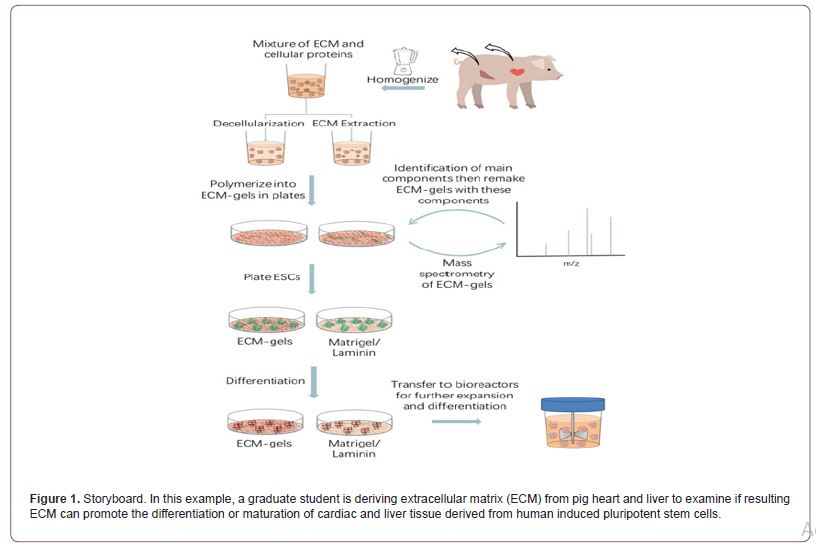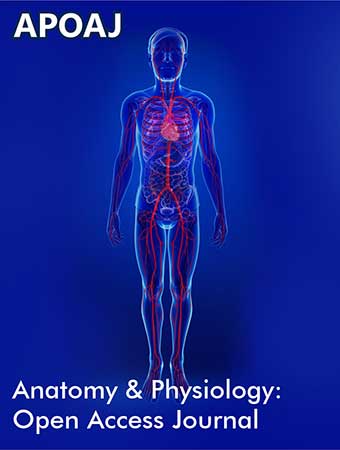 Research Article
Research Article
Teaching Scientists Customer Engagement: Benefits of an Outside Perspective
Derrick E. Rancourt*
Biomedical Engineering Graduate Program, Cumming School of Medicine University of Calgary Calgary, AB, Canada
Derrick E. Rancour, Biomedical Engineering Graduate Program, Cumming School of Medicine University of Calgary Calgar, AB, T2N 4N1, Canada
Received Date:February 28, 2024; Published Date:March 14, 2024
Abstract
We introduced a knowledge translation module into our core graduate course to provide customer engagement experience to our students. After developing an integrated knowledge translation (iKT) plan, students were asked to prepare a storyboard describing their research and to pitch it to a potential stakeholder identified in their iKT plan. Following their pitch and interview, students reflected on the impact of the experience with their research plan. Through experience students learn humility, resilience, and the benefits of an outside perspective. Since business online is the new normal, this module is easily ported to an asynchronous online learning environment.
Challenge Statement
We recently undertook a labor market study of approximately 100 biomedical companies in Western Canada. When employers were asked which non-technical skills new graduate students struggle with in the workplace, the top responses were project management and customer engagement. Since biomedical engineering students work on projects that expose them to fundamental project management skills, we reconciled this to be an awareness gap easily remedied by calling students’ attention to it. However, we were completely surprised by employers’ customer engagement expectation, deeming it to be a programmatic gap.
Although some graduate students may encounter customers through prior retail experience, we reconciled that our training programs do not expose students to customers. However, with new trends to incorporate design thinking and lean product development into our teaching, the impetus is there to teach students to interact with customers early in the product development cycle. In alignment, governments have called for greater research impact by developing knowledge into products through market pull instead of push [1]. Introducing market pull into research requires the early integration of potential customers (i.e., knowledge consumers) into a research co-production process.
Novel Initiative
We set about to teach our students about integrated knowledge translation and to put it into practice in their second semester core course focused on research proposal preparation. After a brief lecture that introduced the concepts of the ivory tower, the knowing-doing gap, and customer centered design thinking, we introduced the concept of stakeholders and importance of bringing customers into a research co-production process. Fortunately, in our first semester core course, we taught our students how to reach working professionals using LinkedIn and how to engage via informational interviewing. In final part of the lecture, we introduced the research storyboard (Figure 1) as new way to engage potential research stakeholders, who not only could provide feedback on their research project but could be willing to serve as non-academic mentors and career champions.
In a one-hour work session that followed, we invited students to develop an integrated knowledge translation plan using an established template [2]. The first half hour focused on structuring their plan. In the first 15 minutes, students reflected on their emerging research projects and to identify the potential knowledge products (publications, presentations, prototypes, patents, practice guidelines, etc.) being developed and the potential receptors of their research. They were encouraged to recognize that knowledge occurs on a spectrum from being discovery based to being applied. In the second 15 minutes, students were asked to identify various knowledge translations strategies surrounding their research and to how to define success. They were tasked with discriminating between pre-established strategies, such as publications and presentations, and strategies needing to be developed, such as prototypes or practice guidelines. They were then asked to evaluate their envisioned process, the targeted results and the expected impact.
The second half hour focused on operationalizing their KT process. In the first 15 minutes, students were encouraged to map out a plan using various (What? How? Who? When?) strategies. Using the storyboard example provided (Fig. 1), strategies could include engaging: 1) scientists about manufacturing, FDA about safety, biotech supply companies about market, technology transfer companies about patents, accelerators about entrepreneurship, and government about creating new markets. During the second 15 minutes, students were asked to identify the deliverables and the required resources.

For homework, students were asked to engage a potential stakeholder about their project, to procure a different perspective and advice. Following the experience, the students were asked to turn in a one-page reflection outlining: 1) how they engaged their potential stakeholder, 2) how they shared their project plan with them, 3) the feedback they received, and 4) how they may have reconsidered aspects of their project based upon the feedback.
Reflection
Although this lesson was mostly performed live, we plan to deliver it asynchronously online during the pandemic. Recently, for example, we have developed videos teaching students how to find professional contacts online using LinkedIn and how to conduct informational interviews. While this interview activity occurred pre-COVID, many students did use Skype or Zoom to engage potential stakeholders from outside their local area. Now that the world has become more familiar with conducting business online, students will be asked to perform this activity exclusively online. Since the COVID pandemic, online engagement has become the new, “respectful” way to engage potential stakeholders. Hence, the activity is a practical experiential learning approach, helping students to prepare for an online future.
According to stretch learning theory [3], interviews are an excellent stage for experiential learning, where there is positive correlation between Yerkes-Dodson performance and mild stress hormone forming long-term memories. Most students are reluctant to seek advice for fear of looking incompetent. However, advice seeking is a surprisingly effective strategy to exercise influence when lacking authority [4]. Students learn that professionals are giving of their time. Encouraging reflection and sharing, students encounter emancipatory knowledge, which forms the basis of change. Students learn that many interviewees become champions, investing themselves into the aspirations of their interviewers. Students imagine themselves in a professional role, which motivates them to focus on their personal career development [5]. Amongst professionals, students gain tacit skills, learning to read social cues, regulate emotional expression and engage in constructive dialogue. Through reflection and sharing students turn this tacit knowledge into explicit knowledge that they can easily draw upon.
Storyboarding and informational interviews are forms of rapid prototype testing: Prior to an interview, a student has a mental image of their project. However, information that is gleaned can influence the student to change their mental model, a process called pivoting. After the storyboarding exercise, many students reported how they changed their project based upon the feedback of their interviewee. Pivoting is a good skill for students to master, because it promotes resilience through mini-failures [6]. A student pivots every time their prototype fails. Learning iteratively through the II process (i.e. failing forward) students build a new mental model with their interviewee that they improve through reflection. IIs promote “fast failure” and “failing early” which help minimize resource investment. Students should not doggedly pursue a project without paying attention to landscape. Likewise, by failing often, students refine their prototype; then greater investments can occur later using more time-consuming strategies.
Potential stakeholders can provide a valuable perspective that may not come from a graduate student’s supervisor or supervisory committee. Since most graduate students are not destined to become professors, the currency of academia (i.e. publications), may not align with value expectations of trainees (i.e. entrepreneurship, internships), setting up a perfect storm of conflict. An outside perspective can protect students by offering adaptive information and alternative points of view that can buoy students when their confidence or self-esteem is challenged by their academic environment [7]. Such perspective includes but is not limited to: unrealistic academic expectations, achievement not equaling self-worth, success being more broadly defined, and prioritizing experiences that add value to one’s life. Interestingly many students reported that their interviewee offered to help them with their projects downstream.
Acknowledgement
None.
Conflict of Interest
No conflict of interest.
- Khazragui H and Hudson J (2015) Measuring the benefits of university research. Res Eval 24(1): 51-62.
- Brooks AW, Gino F and Schweitzer ME (2015) Smart People Ask for (My) Advice: Seeking Advice Boosts Perceptions of Competence. Manage Sci 61(6): 1421–1435.
- Cabras C and Mondo M (2018) Future orientation as a mediator between career adaptability and life satisfaction in university students. J Career Dev 45(6): 597-609.
- Johnson J, Panagioti M, Bass J, Ramsey L, Harrison R (2017) Resilience to emotional distress in response to failure, error or mistakes: A systematic review. Clin Psychol Rev 52: 19-42.
- Hill MD (2020) Adaptive Information Processing Theory: Origins, Principles, Applications, and Evidence. J Evid Based Soc Work 17(3): 317-331.
-
Derrick E. Rancourt*. Teaching Scientists Customer Engagement: Benefits of an Outside Perspective. Anat & Physiol Open Access J. 1(4): 2024. APOAJ.MS.ID.000519.
-
Cephalic Vein Cut Down Procedure, Subclavian Puncture, Totally Implantable Venous Port Placement, Bony Anatomical Landmark, Coracoid Process, Vessel Diameter, Cadaveric Study, Clinical Decision Making
-

This work is licensed under a Creative Commons Attribution-NonCommercial 4.0 International License.






